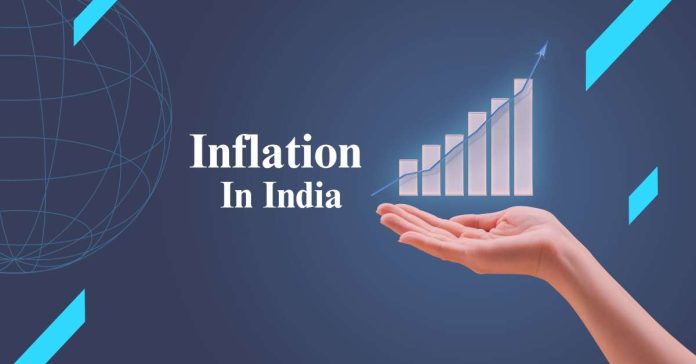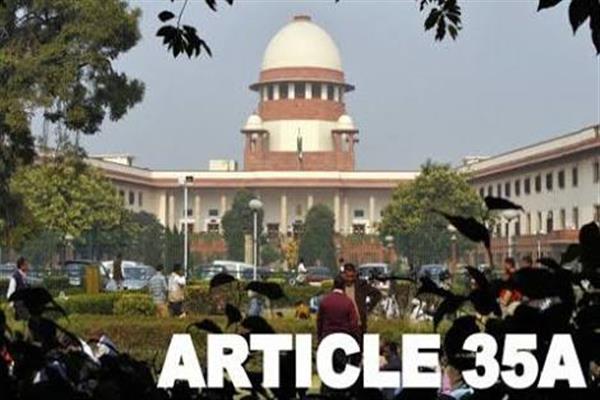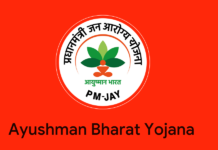Inflation is a major financial term that affects the lives of people in every corner of the globe. India, with its diverse and rapidly growing economy, is no exception. The current inflation in India has been a subject of considerable concern and debate. Let’s have a look at the multifaceted issue of inflation in India, covering the reasons behind its occurrence, its impact on various aspects of the economy, and the steps taken by the government to mitigate its effects.
Table of Contents
Understanding Inflation
Inflation, in its simplest form, refers to the rise in the general price level of goods and services over a period of time. While moderate inflation is often seen as a sign of a healthy economy, excessive or hyperinflation can be disastrous. In India, inflation has been a persistent challenge, and its causes are rooted in various economic, social, and political factors.
Causes of Inflation in India
- Demand-Pull Inflation: One of the primary reasons for inflation in India is demand-pull inflation. This occurs when the aggregate demand for goods and services exceeds the aggregate supply. In India, this can be attributed to factors such as rapid urbanization, a rising middle class, and increased consumer spending.
- Cost-Push Inflation: Another significant cause of inflation in India is cost-push inflation. This arises when the cost of production increases, leading to higher prices. Factors contributing to this type of inflation in India include rising fuel prices, increased wages, and supply chain disruptions.
- Monetary Policy: The Reserve Bank of India (RBI) plays a crucial role in shaping inflation through its monetary policy decisions. The central bank sets interest rates, and its actions influence borrowing costs, which, in turn, affect the overall demand for goods and services.
- Food Inflation: Food inflation is a major concern in India, given that a significant portion of household expenses is allocated to food. Fluctuations in food prices, often attributed to supply chain disruptions, adverse weather conditions, and distribution issues, have a considerable impact on overall inflation.
- Exchange Rates: Exchange rate fluctuations can also influence inflation. A weaker Indian rupee can lead to higher import costs, which can translate into increased prices for imported goods, contributing to inflation.
Latest Update on Inflation in India
In September 2023, India’s retail inflation showed a welcome drop, reaching a three-month low of 5.02%. However, it’s worth noting that this Consumer Price Index (CPI) reading still exceeds the Reserve Bank of India’s (RBI) upper tolerance level within its medium-term target range of 4%, allowing for a band of 4% with a deviation of +/- 2%.
This decline in inflation comes amidst the backdrop of increasing prices, particularly in the case of vegetables, a consequence of uneven rainfall distribution and supply chain disruptions. In response to these economic conditions, the RBI opted to maintain a status quo on interest rates, leaving the benchmark repo rate steady at 6.50%. Shaktikanta Das, the RBI Governor, emphasized the monetary policy committee’s commitment to taking swift and appropriate actions as needed to ensure that inflation expectations remain firmly anchored and to bring inflation back within the target range.
The RBI’s own projections for 2023-24 indicate a headline inflation (CPI) of 5.4%. Concurrently, the real GDP growth is anticipated to be at 6.5%, with a robust Q1 performance at 8.0% during that period.
On the global front, the United States also witnessed changes in its economic landscape in September 2023. The consumer price index (CPI) in the U.S. indicated a year-over-year increase of 3.7% in September. In terms of GDP, the nation experienced an acceleration, with growth reaching 2.1% in the second quarter.
Inflation Trends in India
To understand the gravity of the inflation problem in India, it’s essential to look at some key statistics and trends.
- Historical Data: In the past decade, India has experienced fluctuations in its inflation rate. The Wholesale Price Index (WPI) and the Consumer Price Index (CPI) are two commonly used metrics to gauge inflation. The CPI has been relatively higher, reflecting the concerns about rising consumer prices.
- Consumer Impact: High inflation directly impacts the purchasing power of consumers. It erodes the value of money, reducing the standard of living for households. Essential items such as food, fuel, and housing become more expensive, making it challenging for people to meet their daily needs.
- Economic Growth: Inflation can also impact economic growth. Moderate inflation is often seen as a sign of a healthy economy, but if inflation rates rise too quickly, it can lead to uncertainty, reduce investment, and ultimately slow down economic growth.
- Interest Rates: The RBI often adjusts interest rates to manage inflation. High inflation can lead to higher interest rates, making borrowing more expensive and potentially hindering economic expansion.
Government Measures to Tackle Inflation
The Indian government, in collaboration with the RBI, has implemented various measures to combat inflation and its adverse effects. Some of the key steps taken include:
- Monetary Policy: The RBI regularly reviews and adjusts monetary policy measures to control inflation. It employs tools such as the repo rate (the rate at which banks can borrow from the RBI) and the cash reserve ratio (the proportion of deposits banks must keep in reserve). These measures influence the money supply and borrowing costs in the economy.
- Supply-Side Reforms: The government has initiated several supply-side reforms to address inflationary pressures. These include investments in infrastructure, promoting agricultural productivity, and streamlining distribution channels for essential commodities to reduce supply chain bottlenecks.
- Fiscal Measures: The government has introduced fiscal measures to manage inflation. This includes reducing excise duties and taxes on essential commodities, which can help alleviate cost-push inflation.
- Public Distribution System (PDS): The government has expanded and improved the PDS to ensure the availability of essential food items at subsidized rates to vulnerable populations.
- RBI’s Inflation Targeting: The RBI has adopted a flexible inflation targeting framework. It aims to keep retail inflation within a specific range to maintain price stability. This framework guides the central bank’s policy decisions.
- Exchange Rate Management: To mitigate the impact of exchange rate fluctuations on inflation, the government has adopted measures to stabilize the rupee. This includes maintaining foreign exchange reserves and intervening in the foreign exchange market when necessary.
Research and Data On Inflation
Research plays a crucial role in understanding and addressing inflation in India. Numerous organizations and institutions regularly conduct research on inflation trends, its causes, and its impact. Some noteworthy sources of information on this subject include:
- Reserve Bank of India (RBI): The RBI publishes a wide range of economic reports and data, including inflation-related information. Their reports are considered authoritative sources on monetary policy and inflation in India.
- Central Statistics Office (CSO): The CSO releases data on various economic indicators, including inflation figures. These data are essential for understanding the trends in inflation over time.
- Economic Think Tanks: Organizations like the National Council of Applied Economic Research (NCAER) and the National Institute of Public Finance and Policy (NIPFP) regularly publish research papers and reports on economic issues, including inflation.
- International Institutions: Reports from international organizations like the International Monetary Fund (IMF) and the World Bank often provide insights into the broader economic situation, including inflation, in India.
Future Outlook
The future of inflation in India is subject to various economic, political, and global factors. While it is challenging to make precise predictions, several key factors are worth considering:
- Global Oil Prices: India is heavily dependent on oil imports, and global oil prices have a significant impact on domestic inflation. Any sudden spike in oil prices can lead to cost-push inflation.
- Monetary Policy: The RBI’s monetary policy decisions will continue to influence inflation. The central bank’s commitment to flexible inflation targeting will play a crucial role in managing inflationary pressures.
- Agricultural Productivity: Enhancing agricultural productivity and improving the supply chain for essential commodities will be essential to controlling food inflation.
- Exchange Rates: Exchange rate stability will be crucial to managing imported inflation. A weaker rupee can lead to higher import costs, affecting the overall inflation rate.
- Government Policies: The effectiveness of government policies in addressing supply-side issues and ensuring equitable distribution of essential commodities will be vital in the fight against inflation.
Inflation is a multifaceted issue that affects every aspect of an economy and the daily lives of its citizens. In India, the government and the Reserve Bank of India are constantly working to manage inflation and ensure price stability. Through monetary policy, fiscal measures, and supply-side reforms, they aim to strike.
🔥319













